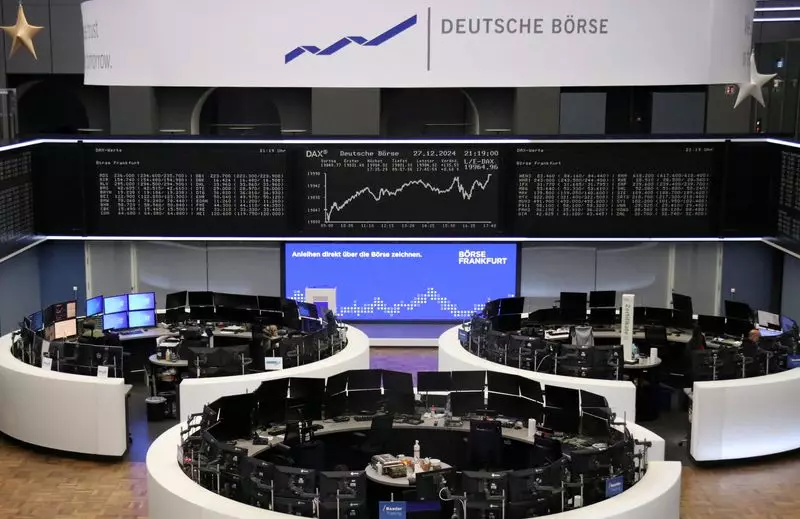European stock markets experienced a decline on the last trading day before the New Year, mirroring trends seen on Wall Street. The pan-European STOXX 600 index fell by 0.6%, signaling apprehension among investors in a climate affected by elevated government bond yields. This downturn comes despite a predominantly positive year for certain regional markets. Key sectors such as technology and healthcare were at the forefront of these losses, underscoring a widespread retreat from equities as traders adopted a cautious stance.
On the eve of the New Year holiday, trading volumes were particularly light. Major stock markets in Germany, Italy, and Switzerland will be closed on Tuesday, further contributing to the subdued market activity. In contrast, the UK and France will observe a half-day trading session, indicating the overall sentiment skewed towards a cautious exit from the trading year.
Bond Yields and Economic Sentiment
The recent uptick in the 10-year German bund yield, approaching levels not seen since mid-November, has added to the market’s unease. This rise closely follows a similar trajectory marked by U.S. Treasury yields. Investors are grappling with uncertainties regarding future monetary policy and potential inflationary pressures, particularly in light of economic policies expected under a new U.S. administration. Such apprehension has undoubtedly soured sentiment, reflected in the prevailing declines across European markets.
Despite these ongoing challenges, the STOXX 600 is poised to close the year with a commendable 5.9% annual increase. Leading the charge are German stocks, bolstered by a remarkable 19% annual surge in the DAX, which has emerged as the top performer among major European exchanges. Conversely, France’s CAC 40 is on track to face a 2.5% dip for the year, compelled by concerns over fiscal deficits and escalating political strife.
Sectorial Performance Insights
Diving deeper into sector performance reveals a mixed bag for European industries. The food and beverages sector, along with automobiles, looks set to finish the year as the weakest sub-sectors, attributed to shifting consumer preferences and increasing production costs. In stark contrast, the banking sector appears to be the best performer, highlighting a potential refuge for investors amidst broader market volatility.
Crossing the Atlantic, Wall Street is also feeling the pressure as tech titans such as Amazon and Microsoft faced significant setbacks, which subsequently lowered the S&P 500 to its lowest level in over a week. This trend underlines the complex relationship between rising interest rates and technology stocks, as investors recalibrate their positions in light of market conditions.
In the midst of these fluctuations, individual stock performances paint a varied picture. Siemens Healthineers reported a decline of 1.7% as the parent company, Siemens AG, signaled a strategic review of its stake in the medical technology unit. Conversely, BayWa saw a remarkable increase of 17% after announcing a restructuring agreement with key shareholders, symbolizing the unpredictable and fast-moving nature of equity markets.
As the dawn of a new year approaches, European markets are navigating through uncharted waters. The interplay between bond yields, sector performance, and geopolitical dynamics introduces layers of complexity for investors. While many remain optimistic about achieving respectable annual returns, concerns surrounding inflation and policy uncertainties indicate that vigilance will be necessary as we move forward. The upcoming year will be crucial for both equity and bond markets, as investors seek clarity and stability in an ever-evolving financial landscape.

